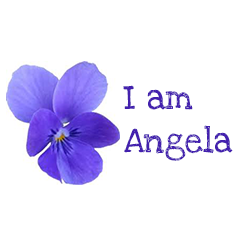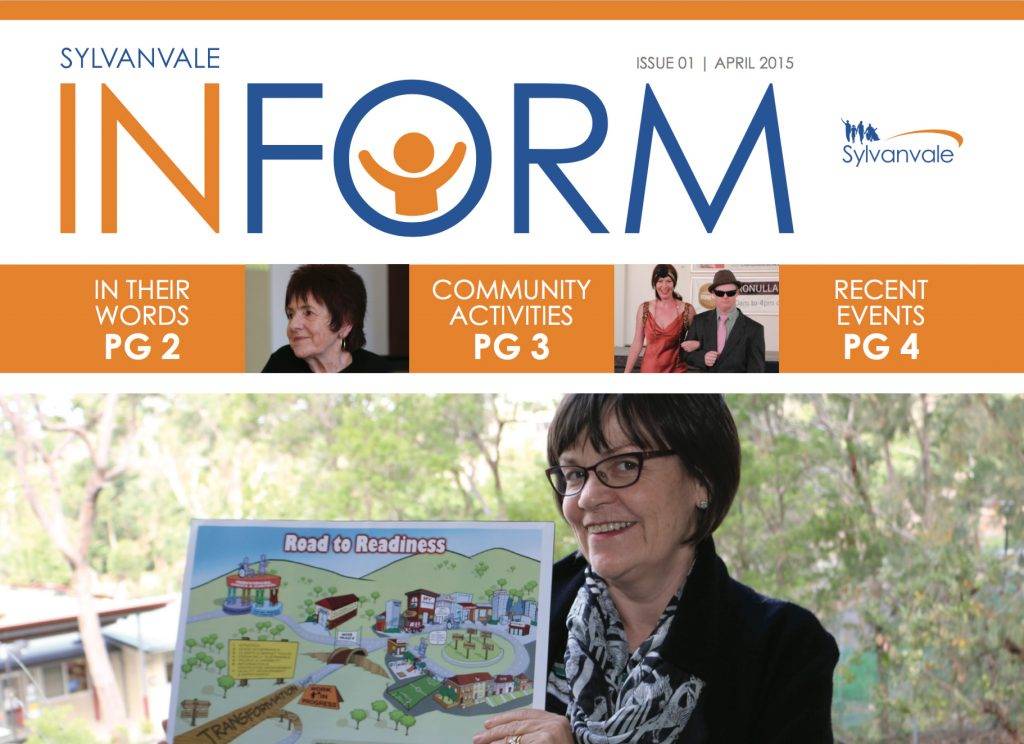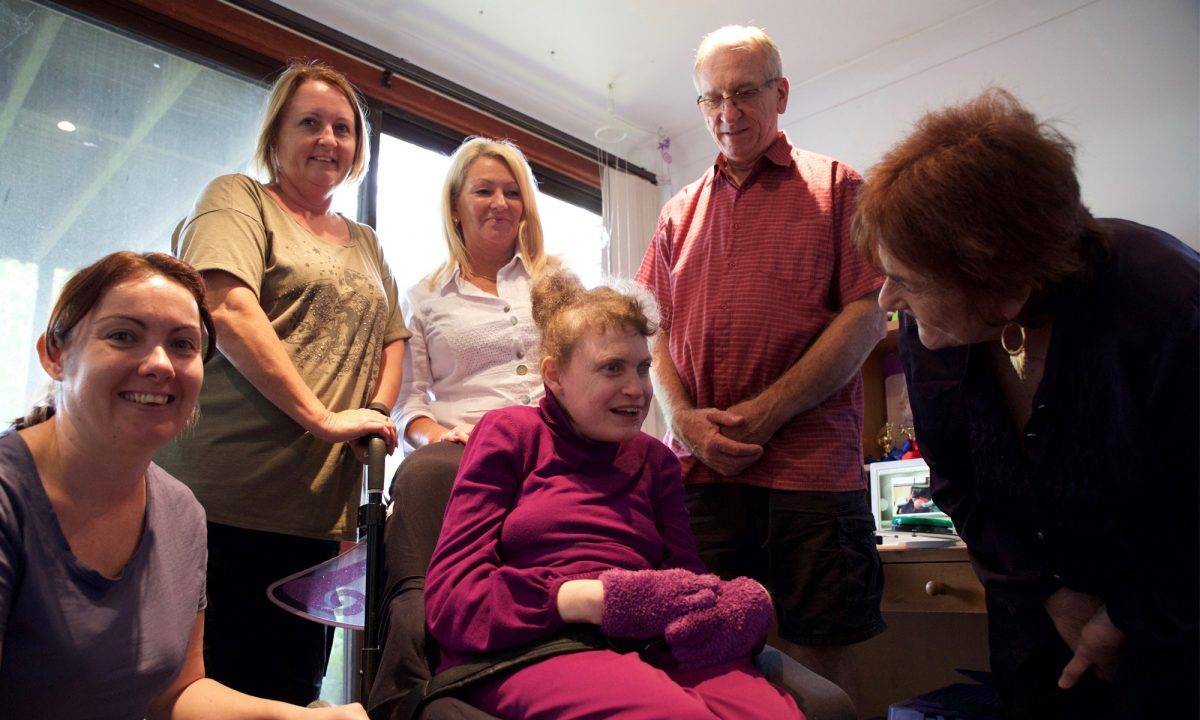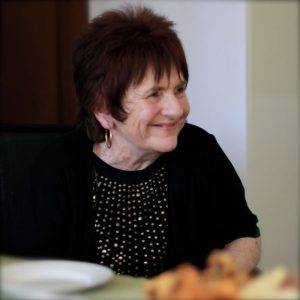Recently my mum was asked to present at a Sylvanvale NDIS information meeting. This is what she had to say and some pics from the presentation below.
Hello everyone my name is Bev Nugent.
I am the mum of Angela who has complex needs, she is non verbal and a wheelchair user. I have been asked to say a few words about the impact of Angela’s individual funding on her lifestyle
So to give a quick overview individual funding has brought about for Angela a flexible person centred approach to her day programme activities . The shift to individualising her supports has liberated her to be included in the community similar to everyone else on a regular basis.
Thus better equality of opportunity to experience the world around her——– in Angela’s case the Opportunity to Experience being the operative words.
The beginning of the successful process started with some general planning and trialling(too involved to go into at this forum)but basically using the concept of
Five Valued Experiences by John O’Brien and Connie Lyle O’Brien which are;
1. Sharing of ordinary places (go places)
2. Opportunity to develop and maintain relationships (know people and see friends)
3. Be somebody (being respected by others and seen as a valued person)
4. Opportunity to make choices (big or small)
5. Opportunity to develop abilities (big or small)
However, eventually I decided to contact the Person Centred Hotline of Ageing Disability and Home Care for registration for individual funding and relevent information. This led to on going numerous phone calls, emails, and eventually a link up assessment took place. Sometime later after a processing timeframe I received notification “believe or not” that individual funding for Life Choices had been granted to Angela. I cheered out loud but was somewhat stunned that this had actually came to fruition.
As well– at assessment time I had indicated to the department that perhaps the services of a general case worker after all these years of not having one- maybe would advantageous to give first hand knowledge of other available funding opportunities and any information at this time of change in the disability world and the approaching ndis.
So -yes Angela now has a case worker as well –proving most beneficial.
So moving forward-community connection-with the view of promoting positive recognition while valuing difference of my special young lady was my aim—Angela is now an accepted regular customer who is greeted by name at a local florist,(Flower of Sylvania) given time to choose flowers she wishes to purchase plus of late a further extension of customer experience at Lush Soaps.
The sense of smell is important to Angela so both retailers are perfect for her and as for the retailers —a sale is a sale. In between customer connection, she has increased community experiences from train , ferries, shops ,Nurseries, Royal Easter Show, Centre Point
Tower, Power House Museum and her beloved bowling etc all of which have impacted beautifully on her wellbeing and best lifestyle outcomes –certainly no longer considered a perimeter sitter of traditional day programme activities.
The person centred practice of having the right people (right matching) is paramount. The right people become an ally for supporting someone to have presence in the community and not only require skill and energy of transporting someone with all their complexities in a wheelchair, rain hail or shine but one would hope they would possess and exhibit the understanding of the importance of holding the disabled persons identity in the palm of their hand.
This is especially so for non verbal people. Thus acting as a voice on behalf of the person while promoting social inclusion.
Staff member Pam Turner, is Angela’s community support/communication ally and I publicly thank her for all her effort, especially the photo journey, her willing spirit and her valuing of my special young lady.
Further balance to Angela’s community presence is a home based podiatrist, remedial massage therapist twice a week plus the absolute highlight of a multimedia advocate. Brendan O’Connell introduced Angela to adaptive assistive equipment .
A touch sensitive switch for music video etc and has proved a powerful tool for Angela including her into the digital world. She has learnt cause and effect and it is a delight to watch her actively engaged and expressing joy at her acquired skill.
The whole multimedia intervention setup at home continues to be of most important to and for Angela on a variety of levels-while the attitude of of her advocate being a possibilitarian – has brought about the launching of Angela’s own website — communication to the (enth)“Nth” degree- let me tell you my mind still boggles .
The progressive ongoing intervention from profile, personal identity card, personalised stationary, Youtube , digital planning, reviewing to providing her with what we call a Visual Voice has brought a better understanding of Angela’s day to day life and aspirations.
As Brendan says –this side of Angela wouldn’t usually be seen or heard from in a paper based or written assessment. Way to go—what a recharge this attitude of this man has both for Angela and an ageing mum who still believes in “equality of opportunity for disabled people”
In conclusion- individual funding for Angela means the opportunity to experience ,participate in life, exercise preferences thus reflecting her individual identity.
Everyone is born into a common humanity , yes Angela is different but certainly not less.
A quote by Franklin D Roosevelt sums it all up;
“We know that equality of individual ability has never existed and never will, but we do insist that equality of opportunity still must be sought.”
Thank you









